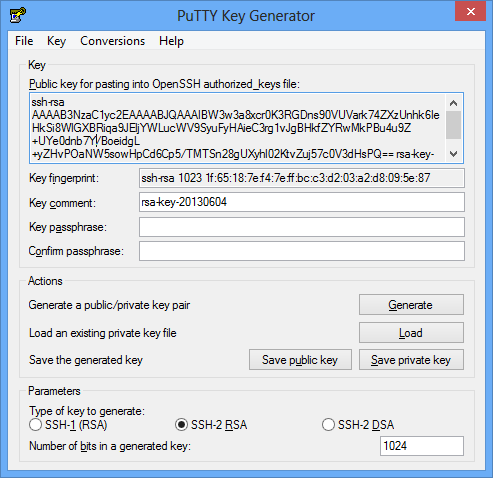Generate Public Key From Private Key Linux
And you cannot recover the private key from the public key, public key cryptography relies on this being impossible. The only way to recover your private key is from a backup of the private key. ¹ Outside of gpg, it's typically called a private key when there's a corresponding public key, and a secret key. In the Number of bits in a generated key box, enter 2048. Click Generate to generate a public/private key pair. As the key is being generated, move the mouse around the blank area as directed. (Optional) Enter a passphrase for the private key in the Key passphrase box and reenter it in the Confirm passphrase box. It will generate two keys, one public (the one you will share to the server) and the other is private and you shall not share with anyone. Once the public key is copied in the /.ssh/authorizedkeys in the server, you can login without being prompt for password. Description (how to do it): Generate a key/pair or use an existing private key: If you have a private key: Open puttygen. Create a new 'authorizedkeys' file (with Notepad): Copy your public key data from. Upload the key to a Linux server. Set proper permissions: Make a.ssh.
- Generate Ssh Public Key From Private Key
- Generate Public Key From Private Key Linux Windows 7
- Generate Rsa Public Private Key
SSH allows for both password based authentication, as well as public key authentication. Public key authentication is generally regarded as being more secure, as it isn’t as prone to brute force login attempts (if you disable password based authentication). The private key can also have a passphrase associated with it, which makes public key authentication even more secure if needed.
Sometimes cloud servers will let you put a public key in as a authorized authentication key when the cloud server is created, preventing the need for password based authentication to be enabled by default.
Generate a new SSH public and private key pair:
“Identifying comment” can be any string that will assist in determining which key this is. “username@hostname” of the machine where you are connecting from would be a good example.
eg:
This will generate two files, “keypair” and “keypair.pub”. “keypair” being the private key that you need to keep secure, and “keypair.pub” being the public key, that can be put on servers that you want to be able to log into with the private key.
Change the filename to suit your needs. This example uses “keypair” for the examples.
The contents of the public key file “keypair.pub” can be inserted into the ~/.ssh/authorized_keys file on the machine that you want to be able to connect into remotely. This must be done for the specific user.
Insert public key into authorized keys
View the contents of the public key file:
Generate Ssh Public Key From Private Key

eg:
Take note of the output, and copy it into the clipboard if possible, or use some other method to get this file/data onto the remote machine, as it will be used in the next step.
On the remote server you want to be able to log into:
If you have chosen to copy the public key file to the remote host instead, you can issue the following command instead:
Logging into remote ssh server using the private key file
To connect to the remote host using SSH you can use the following command:
Generate Public Key From Private Key Linux Windows 7
This will use the private key called “keypair” created earlier, and assuming the remote server has the public key added to the “user” users authorized_keys file, you should be able to log into the remote system.
Convert PNG Images to JPG on Ubuntu via the Command Line
March 13, 2020
